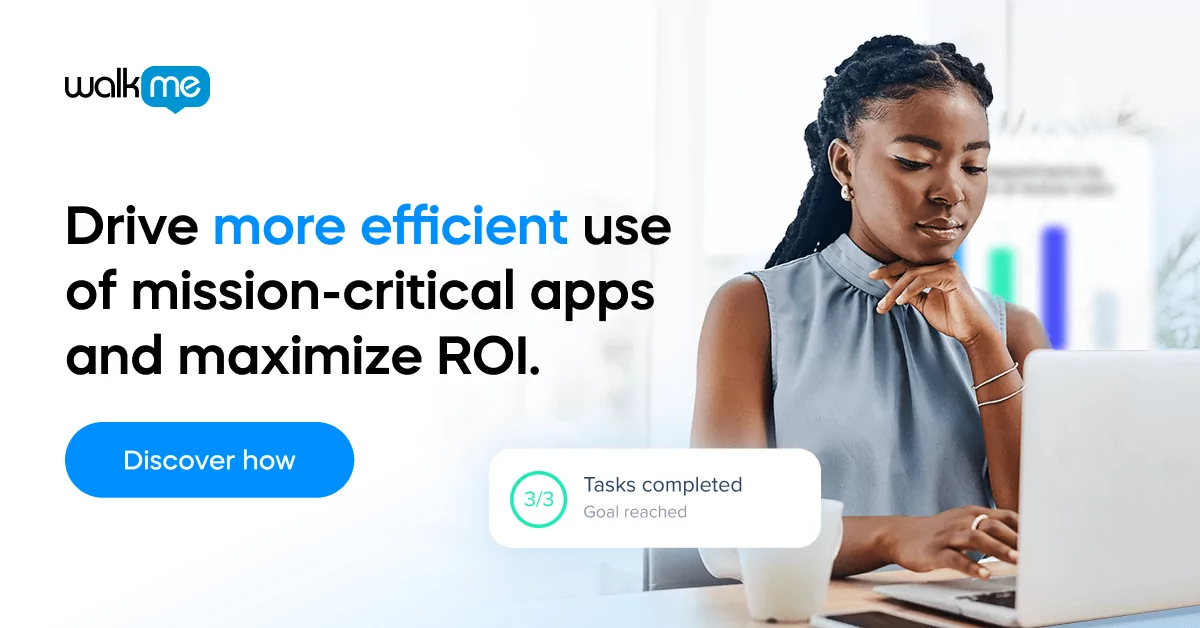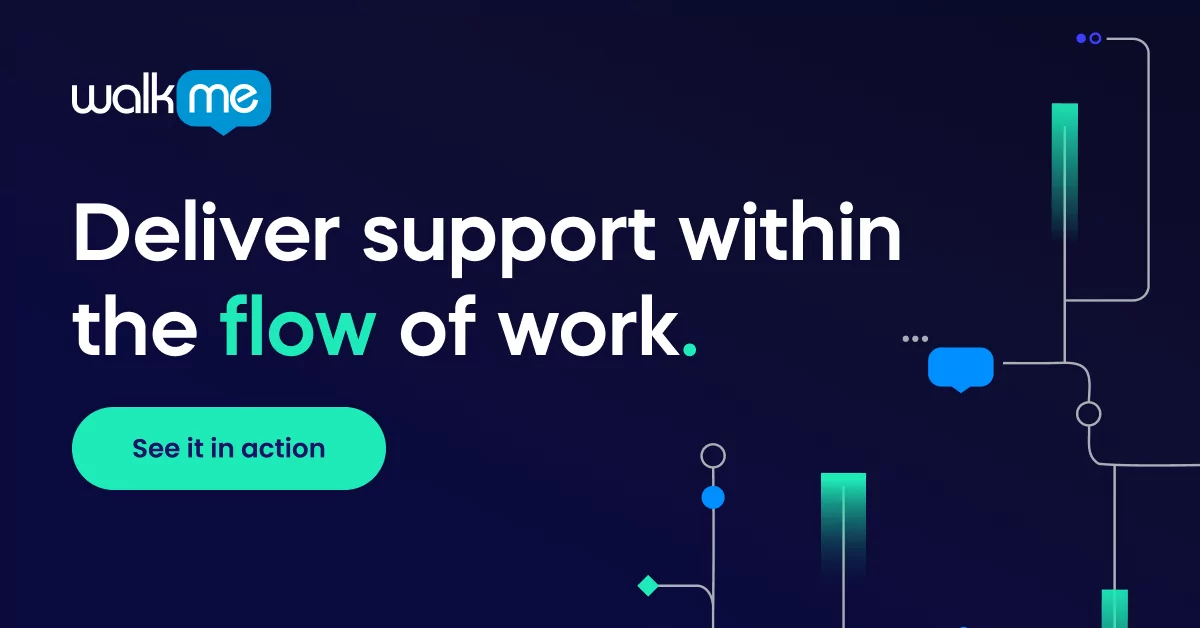For many organizations, adopting new software is a major investment and a big leap.
When a new software application is deployed, expectations and hopes rise. Organizations are banking on large productivity gains, employees are hoping for a better day-to-day workflow, managers want a smoother, more efficient workplace.
Unfortunately, though, all too many software investments fall dramatically short of those expectations.
While it may be tempting to point a finger at the software itself, or even at people, the problem usually lies in the method of adoption.

Why “adopting new software” is only the beginning
Perhaps the most important thing to note is that software adoption and software implementation both have specific meanings.
Software implementation is the installation and rollout of new software tools within a business. Most organizations realize that implementation is only the first step, which is why the focus usually turns to software adoption.
Software adoption measures how fully a software platform is utilized. The difference is profound and has a deep impact on employee performance, organizational performance, as well as a business’s ability to meet stakeholders’ expectations.
Digital adoption takes this concept even further, referring to:
- Using software platforms for their intended purpose and to their fullest extent
- Adopting new workflows, processes, and systems
- The adoption of digital-centric mindsets and behaviors
In other words, digital adoption expands its scope to embrace the entire digital workplace, rather than just a single software application.
A digital adoption strategy doesn’t just focus on improving employee skills – though that is certainly a crucial part of the digital adoption process – it aims at supporting an organization’s digital transformation agenda.
Even if an organization does not have a long-term digital transformation strategy, it still pays to think in terms of digital adoption instead of software adoption.
Two major benefits of choosing a digital adoption strategy
As mentioned, software adoption restricts its focus to the implementation and adoption of digital tools.
However, because digital adoption strategies emphasize the entire digital context within which those tools operate, they can have a positive influence on areas such as…
Employee proficiency, productivity, and performance
Employee performance depends on a variety of factors, both “hard” and “soft.” Having cutting-edge software certainly helps, but it is only one variable among many.
Here’s what it takes to get your employees to a whole new level of #productivity. https://t.co/h5r31Q3RI1 pic.twitter.com/UN4zVyoNZc
— WalkMe (@WalkMeInc) August 16, 2017
Other factors that influence employee performance can include: work environment, organizational culture, performance reviews, accountability systems, management, and employee onboarding and training programs.
Clearly, there are a wide range of influences that impact employees’ day-to-day productivity and performance. A digital adoption strategy certainly cannot fix them all.
However, with the right tools – such as digital adoption platforms (DAPs) – and the right digital adoption strategy, it is possible to improve many of these factors.
For instance, using a digital adoption platform to train employees directly inside an application can:
- Track employees’ software interactions. Software analytics can act as an accountability mechanism, while also offering insight into employees’ training needs
- Significantly reduce the need for technical support. In-app guidance can offer employees a new level of independence and helping to cultivate a culture of self-reliance
- Automate the onboarding and training process. Interactive, on-demand guidance accelerates the learning curve, boosts self-confidence, and increases overall productivity levels
Used as part of a comprehensive digital adoption strategy, digital adoption platforms can have a dramatic impact on many aspects of the digital workplace, ultimately helping to improve employee performance and organizational performance.

Long-term organizational health, alignment, and effectiveness
Organizational effectiveness should not be measured strictly in terms of financial performance. In fact, financial indicators only form a small part of the picture and don’t explain why an organization performs the way it does.
One factor that cannot be understood through financial indicators is organizational health.
According to McKinsey, healthy companies “dramatically outperform their peers” and companies that work on their health “demonstrate tangible performance gains in as little as 6 to 12 months.”
But what is organizational health, exactly?
McKinsey defines it as, “an organization’s ability to align around a common vision, execute against that vision effectively, and renew itself through innovation and creative thinking.”
To improve organizational health, McKinsey recommends developing and adopting a performance culture, such as a “continuous improvement engine,” which involves all employees in the drive for performance and innovation.

A digital adoption strategy is the cornerstone of a strong organization
Naturally, a digital adoption strategy cannot single-handedly transform organizational health overnight. Nonetheless, the same features covered above can significantly contribute to the creation of such a performance-driven culture.
Improved employee training programs can accelerate productivity, enabling employees to become more proficient and productive in less time.
Digital adoption strategies focus on supporting and streamlining digital transformation and in the workplace itself. Rather than achieving proficiency with a single tool, digital adoption strategies help shrink the digital skills gap and reduce inefficiencies.
Automated training solutions, such as digital adoption platforms, can foster a culture of independence and self-sufficiency, boosting employees’ productivity and self-confidence. Of course, achieving benefits such as those covered here will require an investment, a commitment, and in some cases, it can require significant organizational change.
However, given the major advantages, it is well worth the effort to look past software adoption and begin developing a comprehensive digital adoption strategy.


